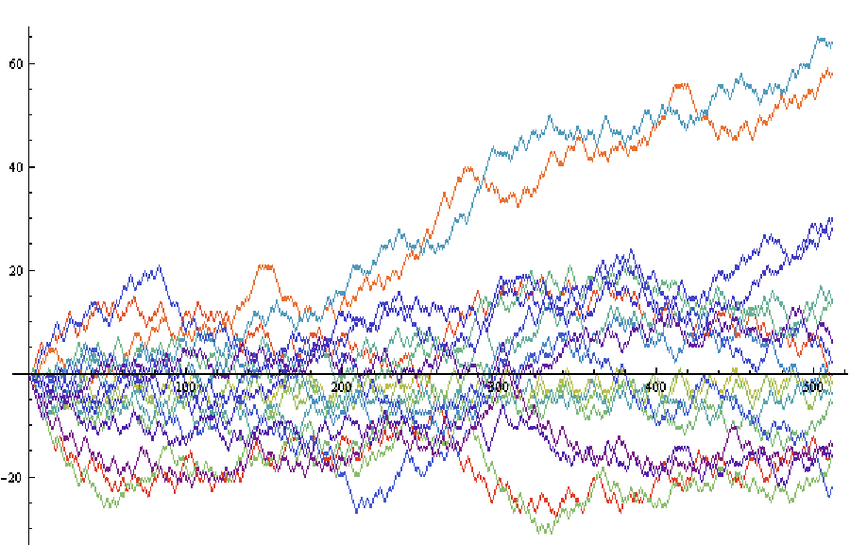Imagine navigating the complex world of financial markets without a roadmap. For many, this uncertainty is where technical analysis steps in, a powerful tool often misunderstood. Today, we will debunk prevalent myths surrounding technical analysis, revealing the truth behind the charts and graphs. In this exploration, we’ll unravel the mystique, empowering you to grasp the essence of technical analysis and recognise its potential amidst the noise of financial speculation.
- The Appeal of Technical Analysis
- Myth 1: Predicting the Future with Certainty
- Myth 2: Complex Charts Mean Accuracy
- Myth 3: Historical Data Guarantees Future Results
- Myth 4: It’s Only for Math Wizards
- Myth 5: Only Individual Traders Use Technical Analysis
- Myth 6: Technical Indicators are One-Size-Fits-All
- Myth 7: The Winning Rate in Technical Analysis Should Be Higher
- Benefits of Technical Analysis
- Final Thoughts on Technical Analysis Myths
The Appeal of Technical Analysis
Before we debunk the myths, let’s understand why technical analysis is a magnetic force in the financial realm. It’s not just about numbers and trends; it’s about deciphering the language of the market. The appeal lies in the ability to visually interpret intricate patterns, transforming raw data into actionable insights.
Have you ever looked at a price chart and sensed a story unfolding? That’s the allure of technical analysis. The visual nature of charts provides a unique perspective, allowing you to see beyond the surface of market movements. It’s more than just lines on a graph; it’s a dynamic dialogue between buyers and sellers, fear and greed, optimism and pessimism.
Myth 1: Predicting the Future with Certainty
Now, let’s confront the first myth that often shrouds technical analysis. Picture this: a crystal ball predicting stock prices with absolute certainty. While the allure of such certainty is tempting, the reality is far from it.

Technical analysis is not about fortune-telling; it’s about understanding probabilities. The market is a dynamic ecosystem influenced by a myriad of factors. Rather than foreseeing the future, technical analysis equips you with tools to assess potential outcomes based on historical patterns and trends.
Consider it like weather forecasting. Meteorologists don’t guarantee a rain-free picnic, but they provide probabilities based on atmospheric conditions. Similarly, technical analysis helps you navigate the financial forecast, acknowledging the uncertainty inherent in market dynamics.
Myth 2: Complex Charts Mean Accuracy
Now, let’s debunk the myth that complexity equates to accuracy in technical analysis. Some might believe that the more complex the charts, the more reliable the predictions. However, in the world of financial markets, simplicity often triumphs.

Charts resembling a modern art masterpiece might grab attention, but the true power lies in simplicity. Clear, straightforward charts allow for a quicker and more accurate interpretation of market movements. Complexity can lead to confusion, and in the fast-paced world of trading, clarity is key. A clean and simple chart can often guide you through the market’s twists and turns with greater precision.
Myth 3: Historical Data Guarantees Future Results
It’s a common misconception to assume that what happened in the past will unfold exactly the same way in the future. However, financial markets are dynamic, influenced by a multitude of ever-changing factors.
Relying solely on historical data is akin to driving forward while only looking in the rearview mirror. It’s crucial to recognize that market conditions evolve, and historical patterns might not repeat themselves precisely. Technical analysis should be a blend of historical insights and a real-time understanding of current market dynamics.
Think of it like learning from experience but adapting to new challenges. The market, like life, is a continuous learning process that requires a flexible approach rather than rigidly sticking to the past.
Myth 4: It’s Only for Math Wizards
Now, let’s dispel the myth that technical analysis is exclusive to maths wizards. You don’t need a Ph.D. in mathematics to navigate the world of charts and trends. Technical analysis is about understanding patterns, not solving complex equations.

Imagine it as learning a new language. Initially, it might seem daunting, but as you grasp the basics, the narrative becomes clearer. User-friendly tools and resources make technical analysis accessible to everyone, regardless of mathematical prowess.
Myth 5: Only Individual Traders Use Technical Analysis
Let’s shatter the misconception that technical analysis is an exclusive tool for individual traders. While it’s true that individual traders widely use it, institutions, hedge funds, and even central banks, like the Fed, leverage technical analysis to make informed decisions. The market is an equal playing field, and technical analysis is a language spoken by both individual and institutional players.
In fact, institutional use of technical analysis often involves vast resources and cutting-edge technology, reinforcing its significance in the broader financial landscape. So, if you ever thought technical analysis was just for the lone trader, think again—it’s a valuable tool embraced by financial giants.
Myth 6: Technical Indicators are One-Size-Fits-All
Let’s tackle the belief that technical indicators can be applied across all markets. Markets are diverse, each with its own characteristics and nuances. What works in the stock market may not be as effective in the cryptocurrency market, and vice versa.
Technical indicators should be tailored to the specific market you’re navigating. It’s not about finding a universal formula but understanding the unique rhythm of each market. Just as different dance styles require different moves, various markets demand customised technical approaches for optimal results.
Adaptability is the key. Technical analysis is not a rigid set of rules but a flexible toolkit that adjusts to the ever-changing dynamics of different markets. Embrace this flexibility, and you’ll find success in tailoring your technical analysis strategies.
Myth 7: The Winning Rate in Technical Analysis Should Be Higher
It’s a common misconception to believe that successful trading means winning every trade. In reality, the financial markets are inherently uncertain, and embracing losses is an integral part of the journey.
Think of it like playing a strategic game. Winning every move is unlikely, but a strategic player focuses on the overall game plan. Just like in the world of technical analysis, the goal isn’t to win every single trade. It’s more about skillfully handling risks and making sure that, in the grand scheme, your overall strategy is a winner.
Keeping a balance is key—grasping the reality that wins and losses are part of the game. Instead of chasing an unrealistically high win rate, it’s smarter to concentrate on a thoughtful strategy that boosts gains while keeping losses in check. It’s the art of playing the long game wisely.
Benefits of Technical Analysis
Now, let’s briefly shift our focus to the positive aspects— the benefits of incorporating technical analysis into your trading arsenal:
- Decision Support: Technical analysis provides a structured framework for decision-making. It helps you identify trends, potential entry and exit points, and overall market sentiment.
- Risk Management: One of its core strengths is aiding in risk management. By setting stop-loss levels and defining risk-reward ratios, you can protect your capital in volatile market conditions.
- Adaptability: Unlike rigid approaches, technical analysis adapts to different market conditions. Whether it’s a trending market or a range-bound one, the tools and techniques can be tailored to suit the scenario.
Final Thoughts on Technical Analysis Myths
We have dismantled prevalent myths surrounding technical analysis, revealing it as a versatile and accessible tool for traders of all kinds. Don’t stress about having a crystal ball for predicting the future or acing every trade. Instead, it’s all about smoothly sailing through the market with a good grasp of probabilities and risk.
As you step into the intriguing realm of technical analysis, remember that it’s a skill honed over time and with hands-on experience. Embrace the learning curve, be open to adapting, and you’ll naturally become better at making smart decisions in the intricate world of financial markets. So, dive in with enthusiasm and take on the challenge of decoding the charts!